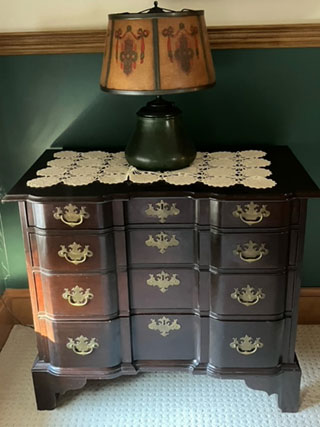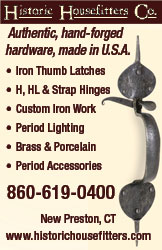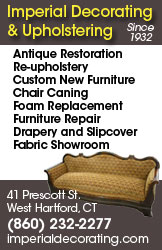
Home Structural Products & Services, Stairlifts
Structural Products & Services, Stairlifts
Furniture, Clocks,
Accessories
Antiques, Folk Art,
Fine Art, Auction Houses
THE LIFE OF WALLACE NUTTING |
|
 Wallace Nutting Paper Label |
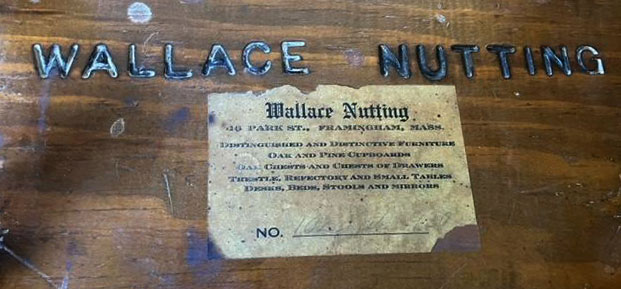 Wallace Nutting Block Branded Signature |
| Wallace Nutting was born Nov 17, 1861 in Rockbottom MA. He was first and foremost a congregational minister. He became a photographer and furniture maker in retirement. He also published over 25 books including his states beautiful series which contained his photographs and in 1928 the 3 volume Furniture Treasury which is still the go-to book today for many antique dealers. Wallace Nutting restored a chain of five historic New England houses between 1914 and 1920: they are: The Hazen Garrison House in Haverill MA, the Cutler Bartlett House in Newburyport MA, The Saugus Iron Works in Saugus MA, the Webb House in Wetherfield CT and the Wentworth Gardiner House in Portsmouth, NH.
Nutting became one of the most knowledgeable and published experts on early American antiques of his time. |
|
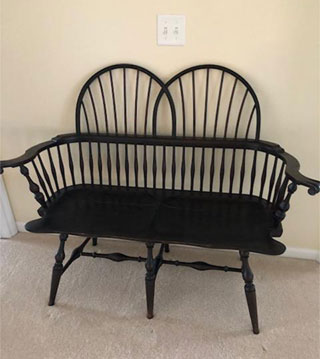 Double bowback Settee |
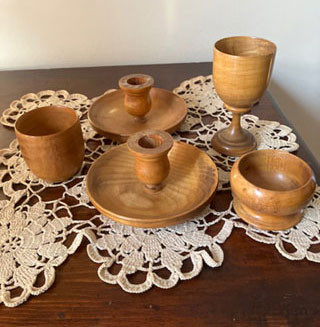 Several Treenware maple pieces block branded by Nutting |
| The Nutting hand colored photograph business:
It is said that Wallace Nutting retired from the ministry due to stress. He began taking long bicycle rides into the country to take photographs. His photos were published in many newspapers. A light bulb went off. If his photos were desired by publishers why wouldn't the general public enjoy them as well. He began printing his photos on platinum paper. In the beginning, Nutting was not happy with the outcome, the colors applied were runny. He then had his colorists brush each photo with banana oil which sealed the pores of the paper and then hand color each with water colors he imported from London England. The outcome was a much more vibrant photo. Selling them for only pennies, by 1925 hardly an American household was without a Nutting photograph on their walls. |
|
During the height of the picture business, around 1917, Nutting turned his attention to his love of American antiques. But he soon found that the finest examples were unobtainable and many people just could not afford them. Wallace Nutting enters into the furniture reproduction business first in 1918 with Windsor chairs. He purchases some of the finest 17th, 18th and early 19th century furniture pieces and photographs each piece, sometimes dis-assembling a piece so he could reproduce turn for turn as close to the original as possible. And because of this it is said that Nutting produced the finest reproduction furniture of the 20th century. He then moved on to other furniture designs such as Hepplewhite, Queen Anne, Chippendale and Sheraton, including chests, beds, tables, desks, Highboys and Secretaries. Although Wallace Nutting did not make the furniture himself, he employed the finest furniture makers he could find and then would oversee the production. He was a visionary with a keen eye for beauty. Early furniture pieces had a paper label attached but Nutting soon found that his labels were being removed and his pieces were being sold as period antiques. He then switched to branding his name with an iron and often a studio number. Wallace Nutting produced a furniture catalog much like his picture catalog and again contacted buyers who bought from him to buy more. |
|
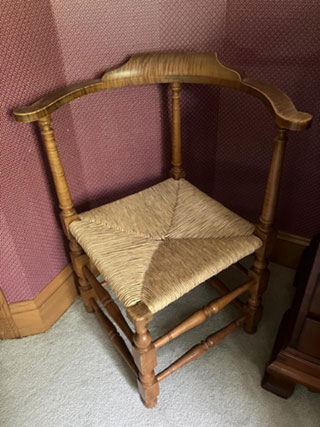 #945 Maple Corner Chair |
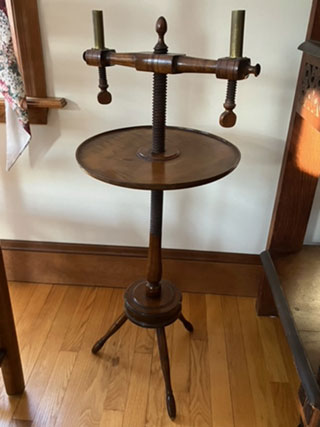 #21 Whirling Candlestand |
| Wallace Nutting's furniture market was primarily upper class households due to the high cost of the furniture. In 1932 a Goddard style Secretary was listed in his catalog for $1800. Admission to a movie was a nickel and the average cost of a home was under $4000. During the great depression people were worried about where their next meal was coming from and sales of Wallace Nutting pictures began to decline. And only those not severely impacted by the depression could afford to buy Nutting furniture. By the mid 1930's Nutting employed only a handful and was in debt for over $100,000 He could not pay his remaining loyal employees and instead gave them furniture. | |
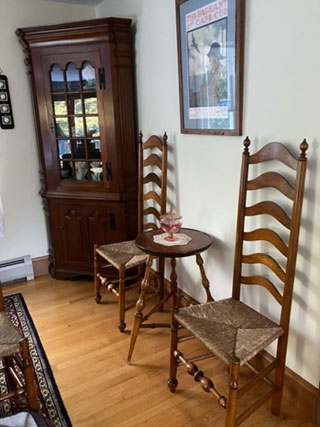 #391 Pair of 6-slat Delaware Valley Ladderbacks and #605 Tripod Table. #945 Pine Corner Cupboard in background |
 #910 Sudbury Cupboard |
| Wallace Nutting died in 1941 leaving his wife Marietta with the businesses and a considerable amount of debt. She died in 1944 leaving the remainder of the picture business to two long time employees and the furniture business and its contents to Berea College in Kentucky. What would Wallace Nutting think of todays world?? Well, I think he would be a bit disappointed. Many of the areas where he took photos are now developed. But thats progress. I don't think he would be a fan of the construction of some of the furniture today, staples and fiberboard, as his methods were of the old school mortise and tenon with square pegs in round holes and the use of the finest woods. As acting Vice President of the Wallace Nutting Collectors Club I hope you enjoyed this article. |
|

